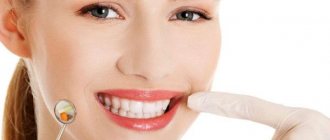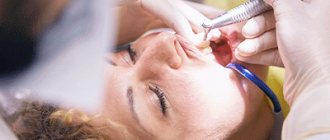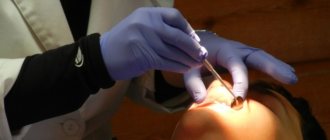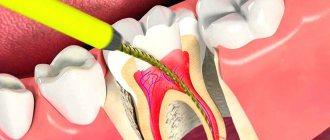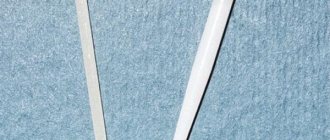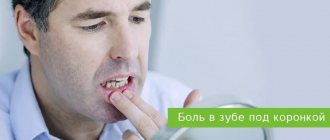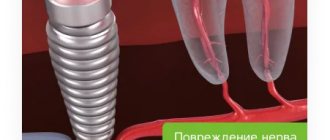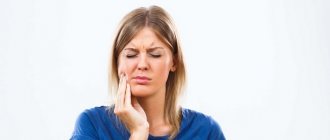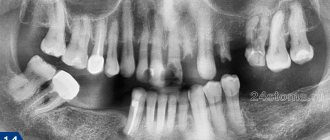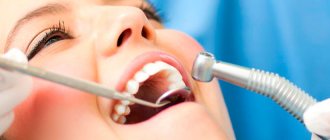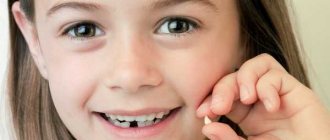Toothache has different manifestations and causes. Carious destruction of enamel, trauma, damage to the mucous membrane, gum disease and even the eruption of permanent units can provoke discomfort, cause fever and general ill health. While waiting for an appointment with a doctor and an accurate diagnosis, parents should be able to conduct an independent diagnosis - calm the baby and provide first aid. To do this, it’s worth figuring out why and what to do if a child at 3-4 years old has a toothache.
Can a child’s baby teeth hurt: dental problems in children
Parents often ask: can baby teeth hurt in a 2-5 year old child? The answer from dentists in this case is always positive. Baby teeth are also susceptible to caries, just like permanent teeth. Moreover, superficial caries can quickly develop into deep caries - causing pulpitis and periodontitis.
Although caries is the main answer to the question “can baby teeth hurt in a 4-year-old child,” there are other dental diseases that provoke complaints in a child. Among them:
- enamel erosion;
- dental hypersensitivity;
- mechanical tooth trauma;
- stomatitis;
- gingivitis;
- periodontitis.
Gum diseases and mucosal ulcers are also included in this list, since a 3-5 year old child will say that his teeth hurt, and will not indicate the true problem.
To help parents: home diagnostics based on the nature of pain and indirect symptoms
Children often complain of toothache, including any discomfort in the oral cavity in this category. The task of parents is to understand what worries the child. A small cheat sheet on dental diseases will be an assistant in diagnosis:
- Caries. At the initial stage, it is noticeable in the form of white matte spots, which gradually darken to brown or black with the formation of holes. Pain manifests itself when there is pressure on a tooth, when pieces of food enter the carious cavity, or as a reaction to cold or hot.
- Pulpitis. It is not always accompanied by severe pain, although with significant nerve damage, the disease causes severe anxiety in the child. External signs are swelling of the soft tissues around the diseased unit, a change in the shade of the tooth.
- Periodontitis is the next stage of the disease with advanced pulpitis. A lump forms on the gum. The pain is sharp, especially when touching a tooth.
- A fistula is a small bubble on the gum, usually under a filled tooth. A symptom that pus has accumulated in the inflamed area and requires release. The pain is temporary and not permanent. Without treatment, there is a high probability of damage to the rudiments of the radical units, so a visit to the dentist is a necessity.
- Flux is an inflammatory process of the periosteum, accompanied by swelling on one side of the face and severe pain in the tooth. A sharp rise in temperature is possible.
- Enamel erosion is a non-carious darkening of the tooth surface that occurs as a result of poor hygiene or an unbalanced diet. Pain occurs as a response to irritating factors - hot food, cold drinks.
- Stomatitis is painful sores, white plaque or pimples in the mouth. In advanced cases, there is general malaise and fever in the child.
- Gingivitis and periodontitis are inflammation of the gums with severe swelling and redness. The pathological process is accompanied by pain and tooth mobility.
- Teething can be painful, both in very young children and in school-age children when molars appear. Signs of the eruption of baby and permanent molars are swollen gums, increased salivation, poor sleep, temperature fluctuations.
Rodikova Tatyana
Parents do not believe that teething in schoolchildren can be very painful. Especially if the first teeth grew easily and imperceptibly. I would like to note that molars can take a long time to erupt - with fever, swelling and refusal to eat. If your child experiences these symptoms, it is worth making an appointment. The doctor will accurately assess the baby’s condition and suggest how to facilitate the growth of new teeth.
Ear hurts
There is hardly a happy mother in the whole wide world whose child did not wake up at night crying and saying “ear hurts.” This is how one of the most common diseases of childhood manifests itself - acute otitis - an inflammatory process of the middle ear, located between the inner ear and the external auditory canal. According to the law of meanness, the disease occurs at the most inopportune time (at night, on weekends) and in the most inappropriate place (at the dacha, on a trip), when it is not possible to show the child to an otolaryngologist (ENT doctor), so it is very important that parents can independently provide first aid to a sick child.
Causes of otitis media in children
The most common causes of otitis in a child are:
- diseases of the upper respiratory tract,
- adenoids,
- weakened immunity,
- various viral and bacterial infections,
- hypothermia,
- allergic diseases.
Often, otitis is caused by the mother’s excessive zeal in treating a runny nose, when, when rinsing the nose, liquid is injected into the nasal cavity under pressure, which “drives” the infection into the auditory tube and further into the middle ear. The anatomical and physiological features of the structure of the child’s body also contribute to the development of otitis: the auditory tube connecting the nasopharynx with the middle ear cavity is wider and shorter in children and located more horizontally than in adults.
Knowing the causes of otitis media, you can prevent this disease. It is necessary to give your child maximum attention and care, protect him from contact with sick people, prevent hypothermia and strengthen the immune system: follow a routine, walk in the fresh air, provide adequate nutrition, do hardening from birth, do not smoke in the presence of the child.
It is not difficult for an attentive mother to suspect otitis media. The main symptom of the disease is acute pain in the ear, which the baby will let you know through his behavior, and an older child will tell you about it in words or by prolonged crying.
The infant becomes restless, cries shrilly and for a long time and even screams, and most importantly, refuses to breastfeed, since sucking movements increase the pain.
In the crib, he takes a position on his side, in which the sore ear is pressed against a soft and warm pillow, which helps reduce pain.
Quite often, in children in the first six months of life, otitis media is accompanied by an increase in temperature.
When you press on the protrusion on the auricle (tragus), the pain intensifies, and the child reacts violently - cries, pushes your hand away.
Sometimes there is redness of the ear and swelling of the tissue around it.
First aid for a child with ear pain
First of all, it is necessary to relieve pain, for which you give the child paracetamol in suspension or suppositories at the rate of 10-15 mg of paracetamol per 1 kilogram of the child’s body weight (in the absence of contraindications). Children's Nurofen, taken orally in an age-appropriate dosage or in suppositories rectally, also has a good analgesic effect.
Local treatment in the absence of ear discharge
consists of using painkillers and anti-inflammatory drops, for example, Otipax, and dry heat on the ear area.
Before introducing drops into the ear, they must be warmed to body temperature to avoid increased pain from contact of the inflamed eardrum with the cold solution. But you should not warm the entire bottle of medicine every time, since frequent warming and cooling will quickly cause the drops to become unusable. The medicine should be stored in the refrigerator, and before the procedure, dip a teaspoon in hot water, then wipe dry and drop 6-7 drops from the bottle into it. This way you will warm the amount of medicine needed for one procedure and save the bulk for future use. The medicine is instilled into the external auditory canal: 3 - 4 drops two - three times a day. Cotton pads moistened with warm otipax or camphor oil relieve pain well.
To improve the patency of the auditory tube and in case of difficulty in nasal breathing, vasoconstrictor drops are used in children's dosages (Nazivin, Otrivin, Vibrocil and others).
The sore ear loves warmth; place a soft cotton (flannelette, flannel) napkin (warm, but not hot!) on the ear area, ironed.
If purulent or bloody discharge appears from the ear, stop instilling any medications until the child is examined by an ENT doctor.
The reason to call an ambulance is discharge from the ear canal, indicating perforation of the eardrum, as well as if ear pain is accompanied by an increase in body temperature above 38.5ºC.
Often parents of a child suffering from otitis media ask the question: is it possible to bathe and walk with him outside? This is not contraindicated, but certain conditions must be met:
- the weather outside should not be rainy, wet, windy and cold, because freezing can cause swelling of the auditory tube and nasal mucosa, and this can complicate the healing process;
- the child should not have an elevated body temperature;
- dress your child according to the weather, do not bundle him up so as not to overheat and sweat outside; he should have a hat on his head that covers his ears (but not on hot summer days);
- When swimming, be careful not to get water into your ear;
- After water procedures, the child should be in a warm room.
And don't forget! A visit to an otolaryngologist for otitis media is mandatory!
Baby tooth hurts after treatment
Pain in a baby tooth after treatment is also not uncommon. And here parents should carefully monitor the baby to understand the cause of the complaints:
- Poor quality treatment. The doctor did not clean the root canals well and did not place a sealed filling. There is only one solution - make an urgent appointment with the dentist and repeat treatment with a good dentist.
- Residual discomfort. This happens when the treatment is complex and soft tissues are injured during drilling or dental procedures. Adults should think about how to relieve a child’s toothache at home - give a painkiller or rinse. If you have long-term complaints, you should make an appointment with a doctor for a consultation and re-examination.
- Allergic reaction to materials and drugs. Allergies most often manifest themselves as itching, but can also cause pain. If the cause of the reaction is an anesthetic used by dentists, it is worth giving a suitable antihistamine. In other cases, you cannot do without visiting a doctor.
Marina Dolotova
You can find cheap dental clinics in Moscow, but it is always worth assessing the health risks. Children with poorly placed fillings are increasingly being brought to Azabuka. And, what’s worse, with prolonged inflammatory processes. Kids cry and complain. I treat teeth and reassure both patients and parents. Such practices are very sad.
Other reasons
Of course, pain in baby teeth is not always a consequence of the presence of any dental disease. Sometimes it appears during the early eruption of a molar next to a temporary one that has not yet fallen out. It may also indicate that the child has neuralgia, spinal problems, otitis media, sinusitis or tonsillitis.
If the baby begins to complain of severe pain after medical intervention, perhaps the problem lies in choosing a low-qualified specialist. Of course, in the first few hours after caries treatment or root canal filling, pain is absolutely normal.
Some of the doctor’s mistakes that can cause pain in the teeth include: severe mechanical trauma to tissues, neglect of the rules for installing filling material, erroneous diagnosis, etc. It is also common for a child to experience allergic reactions to the composite materials and instruments used.
A child’s baby tooth hurts and is loose: treat or remove
Sometimes a child's front baby tooth hurts and becomes loose. Increased mobility can be caused by a planned change of bite or injury. A child’s front teeth hurt after an unsuccessful fall, a blow in the sports section, or minor bicycle accidents. A doctor will be able to remove the consequences of mechanical impact after an x-ray and examination of the oral cavity.
If a permanent tooth is cut under a temporary tooth, and this causes pain, the doctor, of course, will recommend removal. But this is the only option when removal is preferable. In all other cases, teeth with primary temporary occlusion should be protected - fillings should be placed, caries and pulpitis treated, and gum inflammation relieved. It is not worth getting rid of a diseased tooth in the hope of a permanent bite - with early removal, pathological changes in the primary and permanent units and serious orthodontic problems in the future are possible.
A child’s baby tooth hurts: what to do at home
How to help a child with a toothache is the main question when waiting to see a dentist. There are several options:
- folk remedies;
- medication assistance;
- massage.
Traditional methods of relieving toothache
If a child’s baby tooth hurts, folk recipes will tell you how to relieve the pain. There are many of them, but you should choose only herbs and tinctures, the use of which is acceptable for the specific age of the baby. Rinsing will help cope with painful teething and relieve discomfort after filling:
- Warm decoction of sage, chamomile or lemon balm.
- Propolis tincture, slightly diluted with water.
- Oak bark brewed for rinsing.
- Soda solution.
Painkillers
When a 5-year-old child has a toothache, there are usually no questions about what to do. The first thing parents remember is medications that can alleviate the baby’s condition before seeing a doctor. The most popular means:
- gels and ointments - with a cooling, anti-inflammatory, antibacterial and analgesic effect;
- syrups and tablets are medicines in which the active ingredient is paracetamol or ibuprofen.
An alternative solution would be homeopathic preparations - drops, suppositories and ointments based on plant substances.
Massage to relieve toothache in a child
What to do if a child has a toothache, and medications and homeopathy do not help. You can use the secrets of oriental medicine and try acupuncture massage:
- Fingers - you need to massage the index and middle fingers on the hand opposite to the diseased tooth. At least 7 minutes. The second option is to stroke and lightly press the area between the index and thumb on the side of the diseased tooth for about 5 minutes in a circular motion.
- Ears – you need to massage the upper part of the ear in a circular, soft motion. Within 5-7 minutes.
- Jaws - smooth circular movements with your fingers at the base of the disturbing jaw will help relieve pain.
Traditional methods for relieving ear pain
In practice, traditional methods of treatment are often used. They can be used if children do not suffer from purulent otitis and do not have a high temperature. The most popular include:
Use of boric acid tincture
This method allows you to reduce pain in the ear and eliminate the inflammatory process. In childhood, it is strictly forbidden to drip the tincture directly into the ear canal. To use the product, you need to take cotton wool and roll it into a ball. Then warm up the boric acid tincture a little and moisten a cotton ball in it. Before putting the turunda in the ear, you need to lubricate the auricle with baby cream. This will avoid skin burns. The procedure can be performed up to four times a day.
What not to do if a child’s baby tooth hurts
When the question is how to relieve toothache in a child 3 years old or older, several actions are strictly prohibited. Among them:
- warming - do not heat a sore tooth;
- cooling - cold relieves pain, but the facial nerve can get cold;
- compresses – active substances in compresses often provoke allergic reactions and chemical burns to the baby’s delicate skin;
- strong painkillers - adult medications are contraindicated for children even with the most severe toothache;
- feed the child spicy foods - as well as very cold or hot ones, since aggressive exposure increases the pain.
